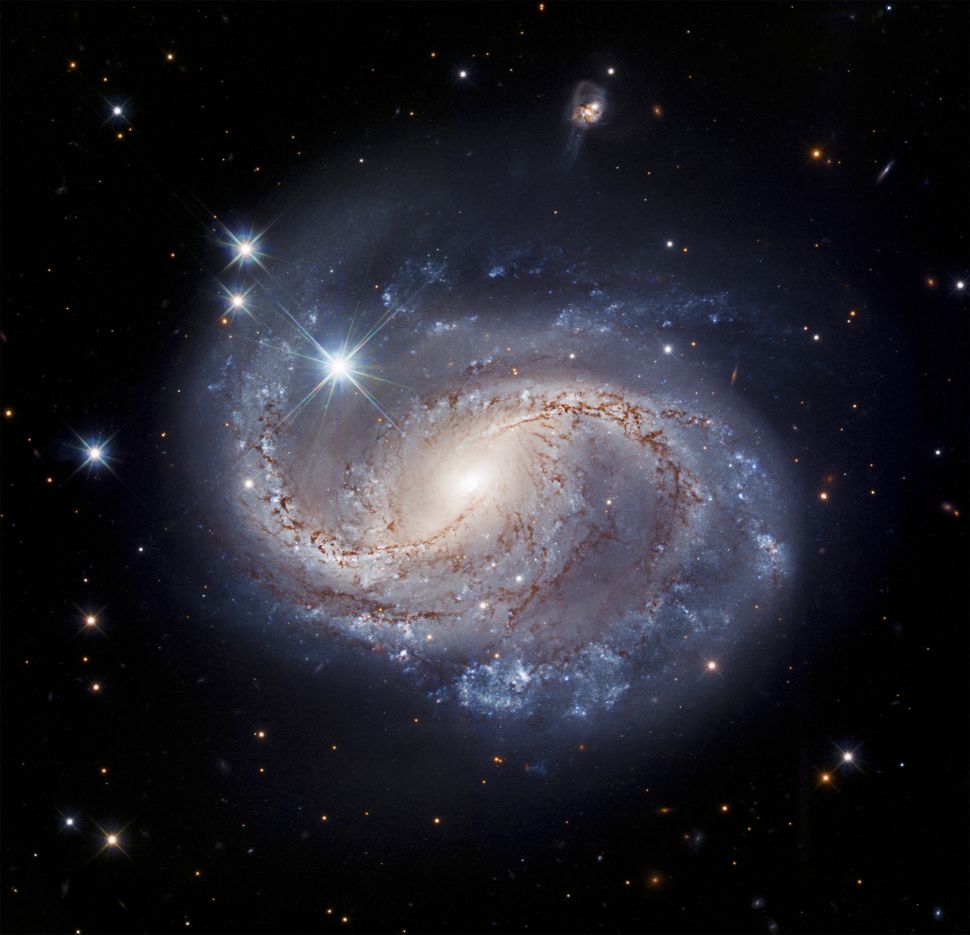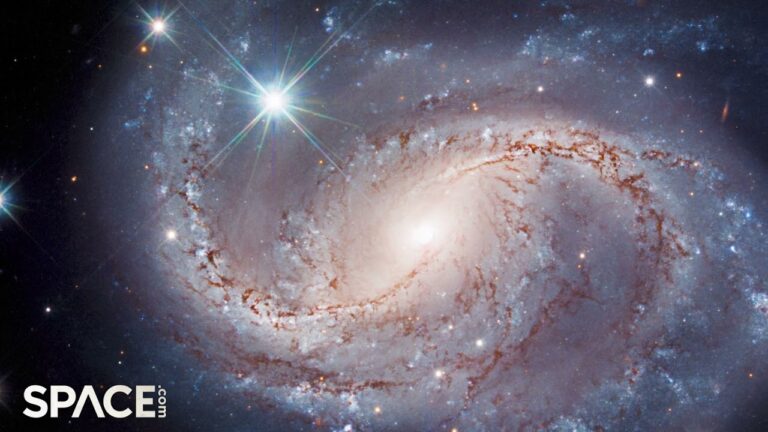The Hubble telescope discovered this stunning spiral galaxy, which serves as a gauge for galactic growth.
NGC 6956 isn’t just pretty to look at, it is an important measure of the universe’s expansion.
While the James Webb Space Telescope has recently received a lot of attention, its predecessor, the Hubble Space Telescope, has continued to wow observers. This time, NGC 6956, a nearly ideal illustration of a barred galaxy located approximately 214 million light-years from Earth, was observed by the Hubble Space Telescope.
Barred galaxies are among the most prevalent types of galaxies in the known universe, accounting for an estimated 70% of all galaxies. They earn their name from the extremely noticeable “bar” of stars that cuts across the galactic core . Due to the fact that gas and other materials are fed into the galactic core via these bars, bar formations are also far more prevalent in galaxies with active galactic nuclei.
However, this process gradually softens the bar into the more conventional spiral formation—like that of NGC 2985—that most people see when thinking of a spiral galaxy. The more material that is directed into the galactic center, the more unstable the bar becomes.

The most current image of NGC 6956 was taken to examine Cepheid variable stars, which are stars whose brightness alternates between brilliant and faint at regular intervals, according to a NASA image description. We may connect these fluctuations in apparent brightness to the star’s true brightness and use that information to calculate the star’s distance from us. These intervals of brightening and dimming are closely tied to a star’s actual brightness.
Since there aren’t many other methods we presently know of, this is a critical approach for astronomers to calculate the distance of extragalactic objects like NGC 6956. Other intriguing characteristics of NGC 6956 include a clearly visible Type Ia supernova, which was created when a white dwarf star exploded as a result of ingesting debris from a partner star.
Since astronomers can measure how rapidly a supernova dims to help determine its distance from Earth, this sort of supernova is another important approach for calculating the distance of distant galaxies. Furthermore, although accurately completing the galaxy map is useful in and of itself, comprehending the universe’s present expansion pace requires regular measurements of the distances of these extragalactic objects.
Source:SpaceCom
Do not forget to share your opinion with us to provide you with the best posts !




0 Comments